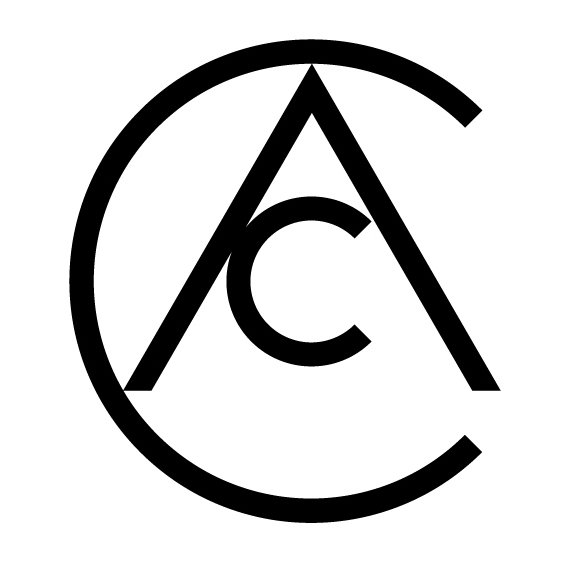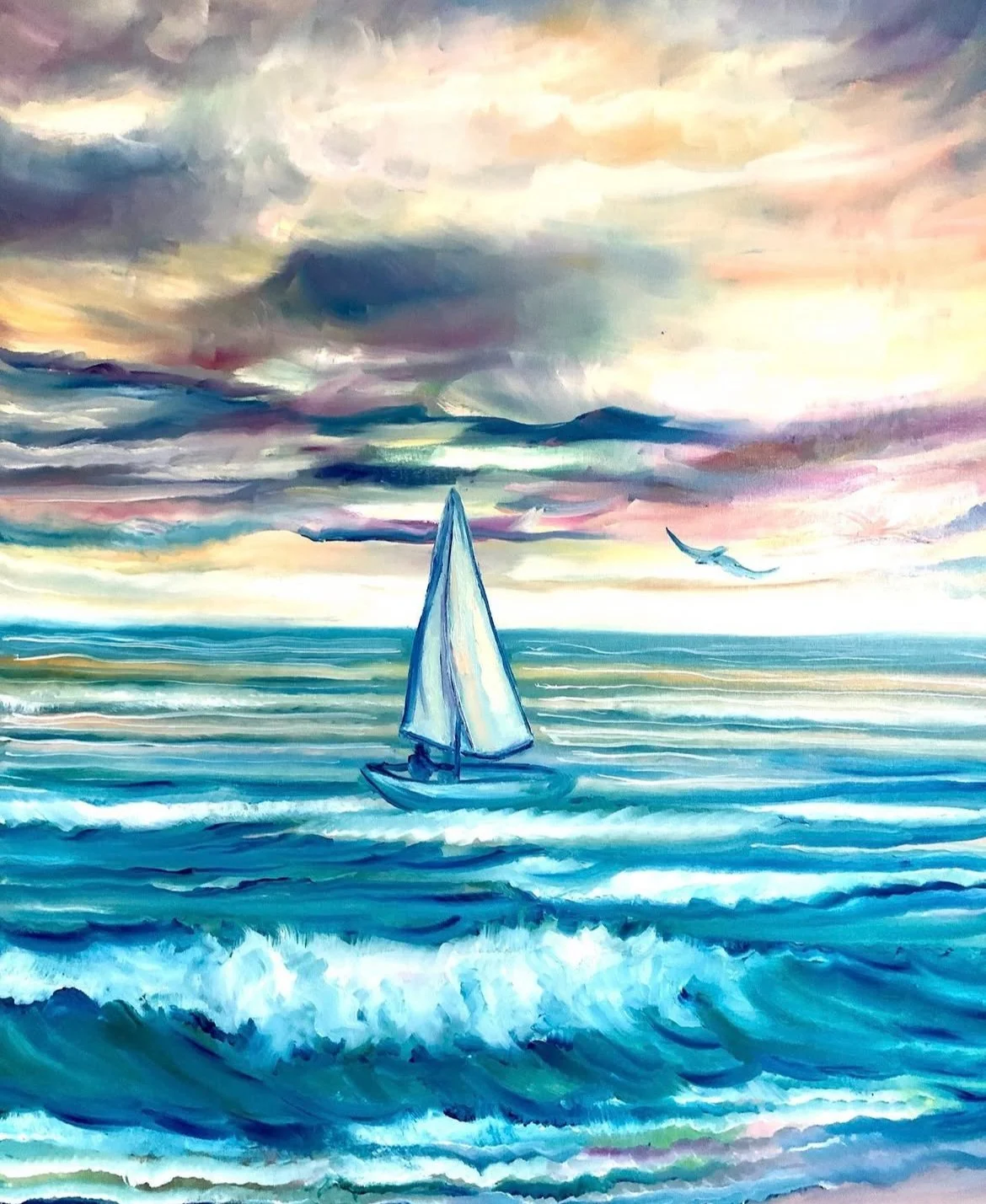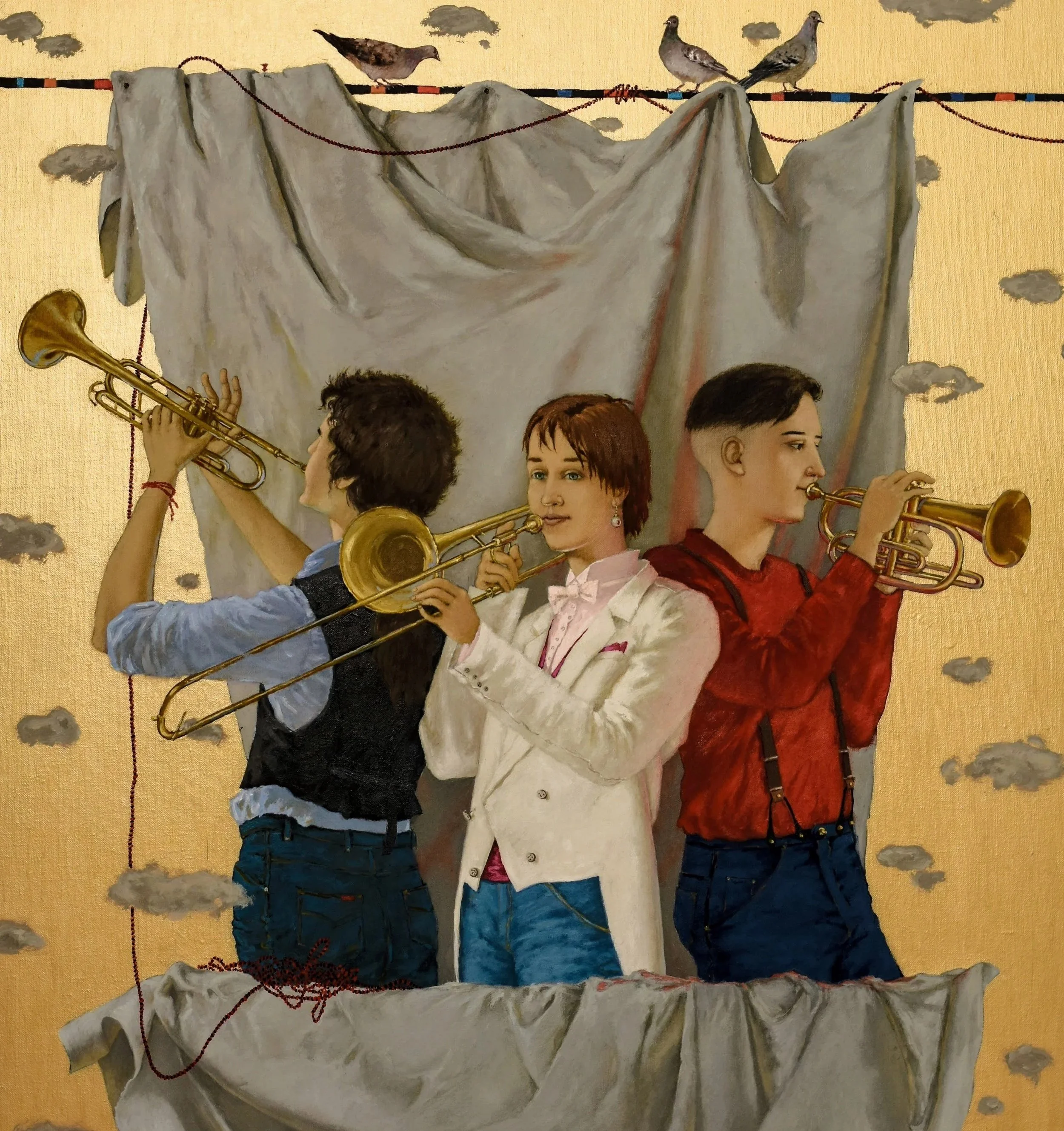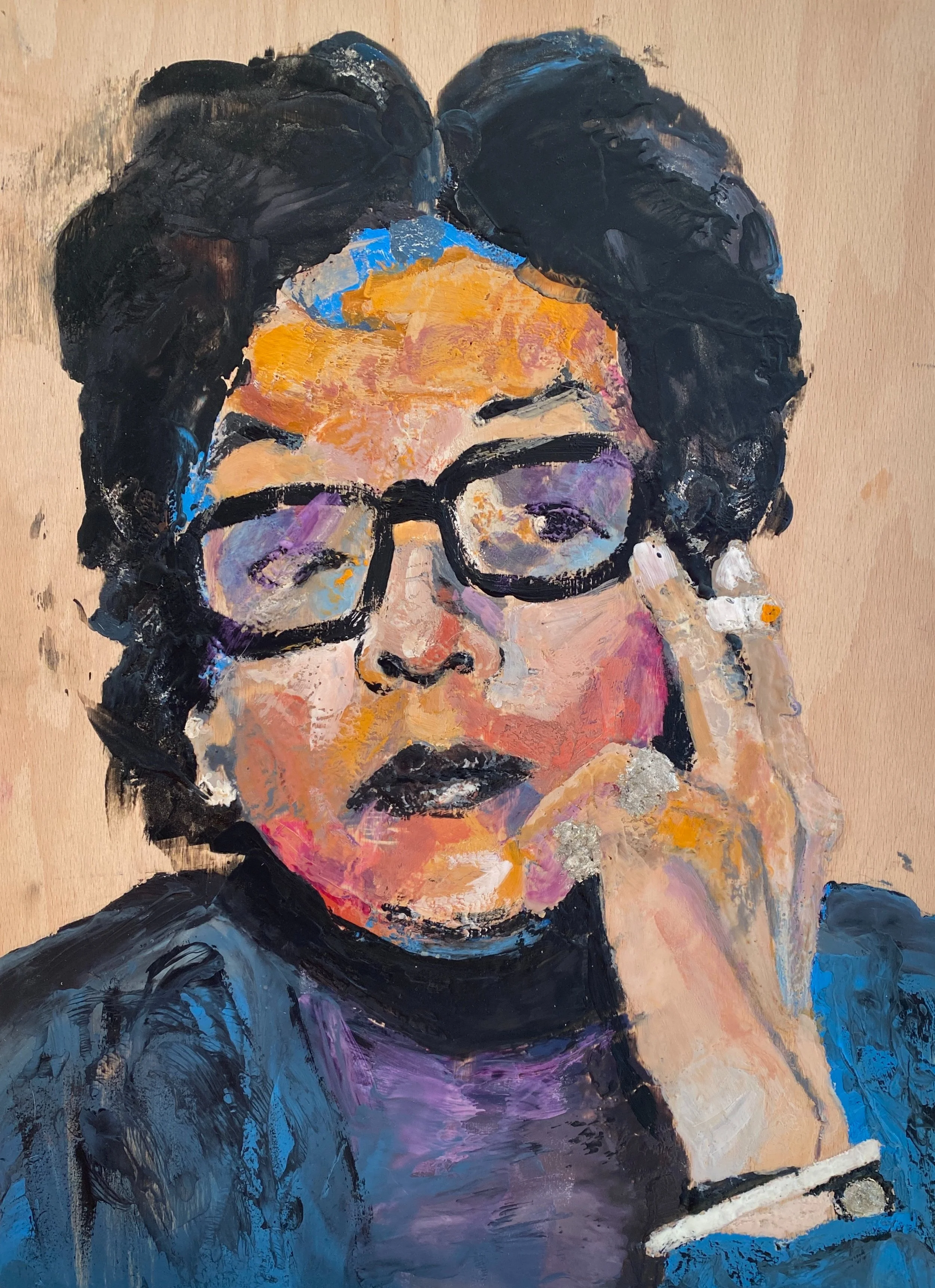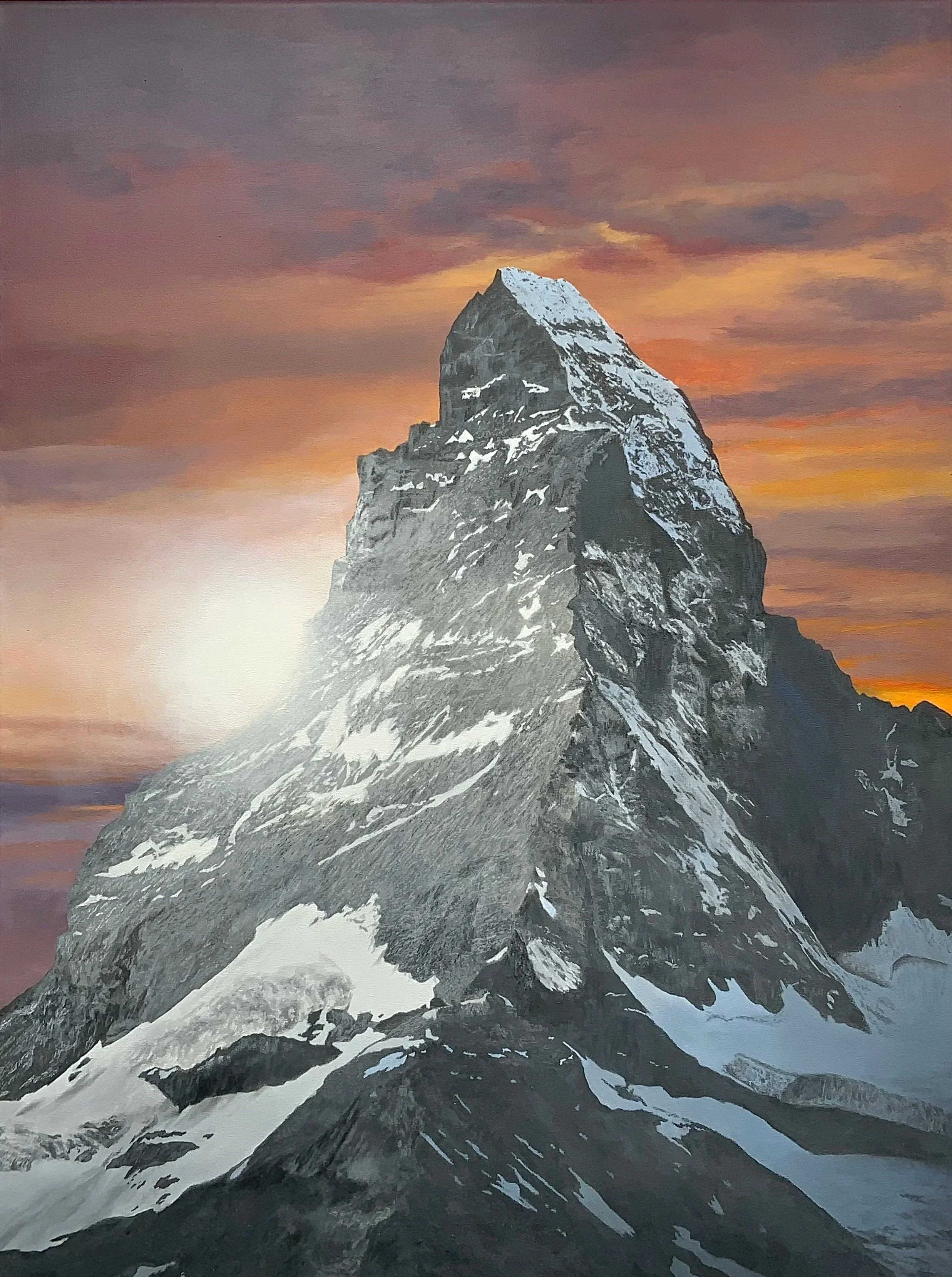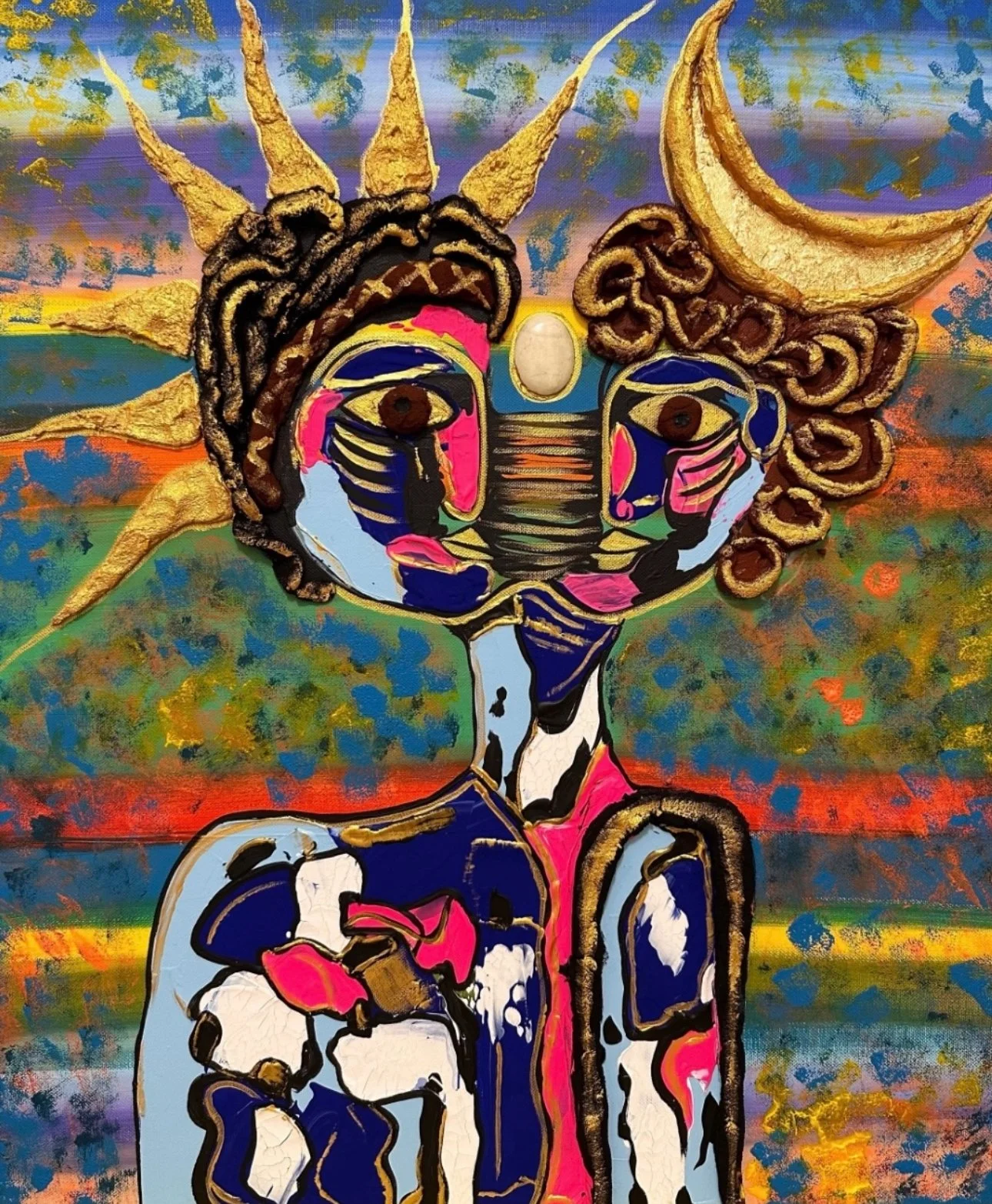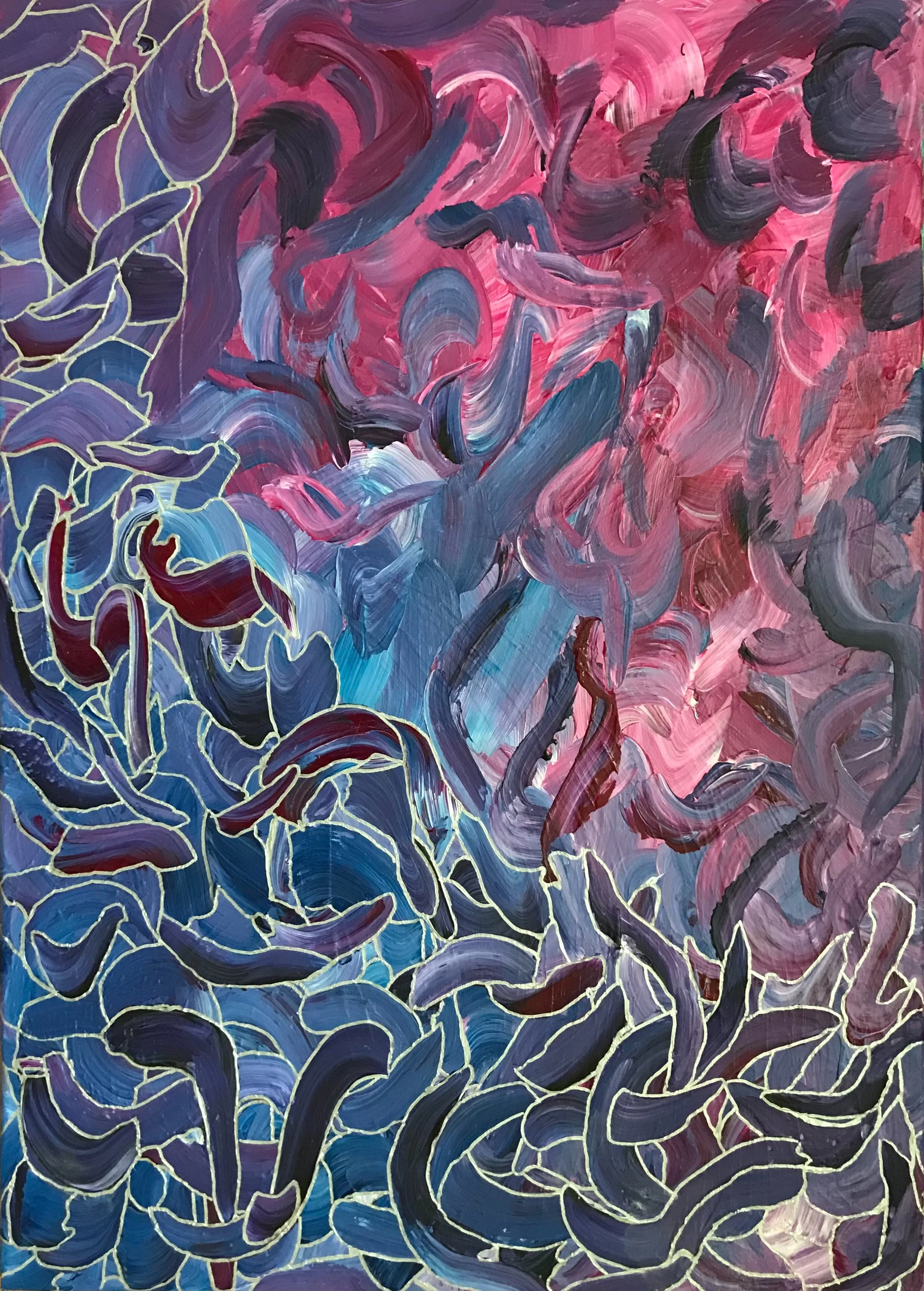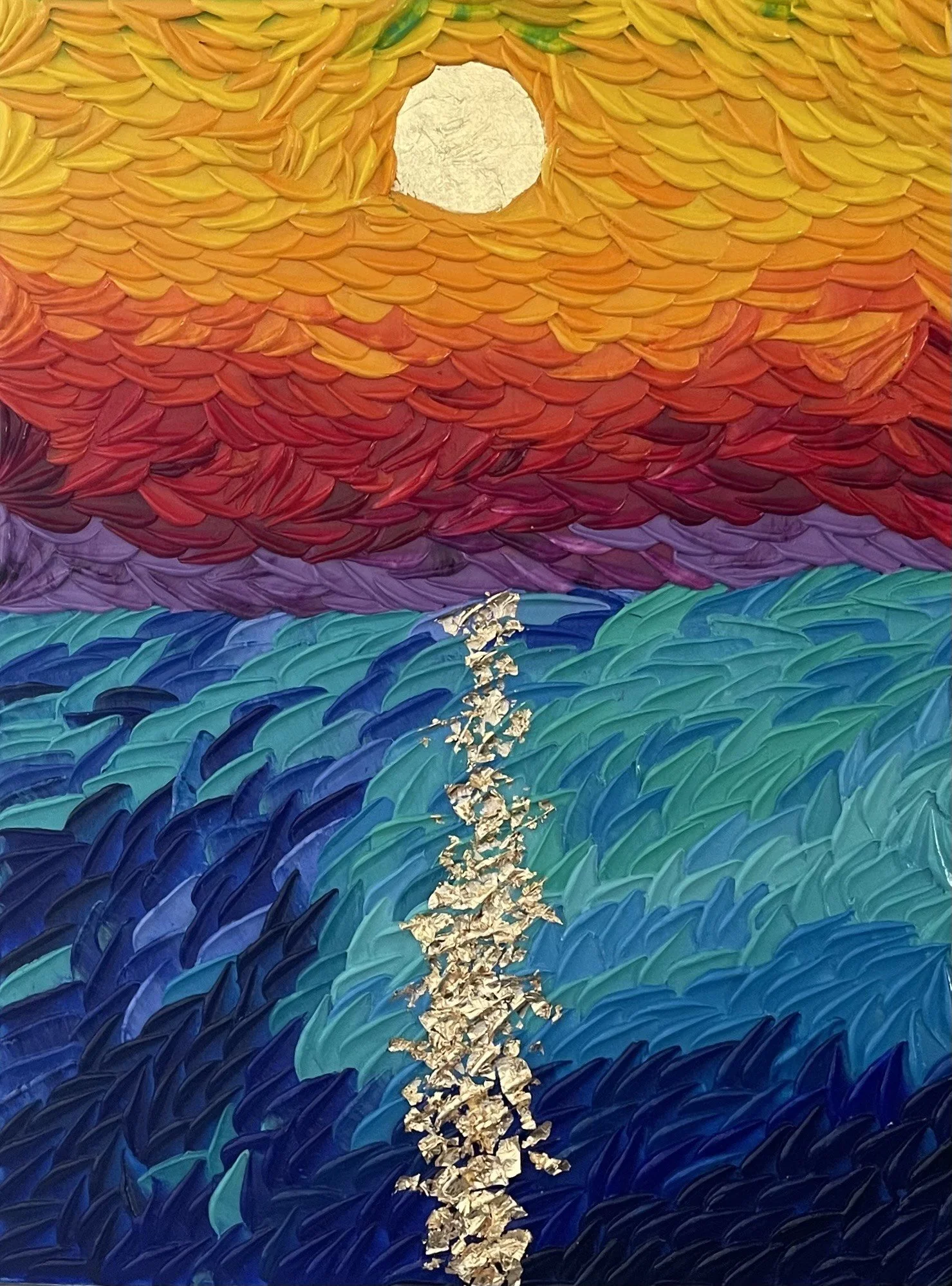Tamara Michel paints various artworks using oil, acrylic, and watercolor paints. She applies learned painting techniques to develop and use her own. Her style is a blend of Impressionism and Figurative art.
All in Painting
Artist Spotlight - Dragan Marković
My paintings are a product, a reaction to my life experiences, based on my relationship with the given reality; my poetics actually dwell on that dark side of life—both personal and universal. Perhaps they are my images on the other side of beauty, but I want to express feelings of horror, fright, and the tragic aspects of human existence.
Artist Spotlight - Jaime Kafati
I am Jaime Eduardo Kafati. I’ve been painting since I arrived in the United States in 1978, but it wasn't until 2018, when I retired from my day job, that I was able to devote to my studio to my art on a full-time basis. Between intermittent commissioned works, I engaged in continued figurative studies, attending local life-drawing sessions, exploring new mediums, and creating allegorical paintings that allowed me to express my contemplations of the world.
Artist Spotlight - Barbara Derecka
Barbara Derecka is a contemporary visual artist originally from Poland, now based in Cheshire, England. Working across acrylic, oil, watercolor, and mixed media, her practice is distinguished by its vivid colour, expressive form, and emotional depth. Her artistic vocabulary spans acrylic, oil, watercolor, and mixed media, allowing for fluidity in texture, depth, and colour intensity.
Artist Spotlight - Vian Borchert
Vian Borchert is an acclaimed artist known for her abstract expressionist style characterized by a poetic take. Borchert has exhibited for many years in numerous exhibitions in both group and solo shows worldwide. Vian is a graduate and “Notable Alumni” from the Corcoran College of Art and Design George Washington University, Washington, DC. Borchert serves as the Art Lead for the Oxford Public Philosophy Journal, based at Oxford University, UK.
Alisa Chernova
Alisa Chernova enters the contemporary art scene not as a painter alone but as a psychotherapist turned artist, who has transformed the consulting room into the canvas. Few artists embody with such clarity the conviction that painting may serve as a visual laboratory for human subjectivity, where the fragmentary self can be staged, tested, and reconstituted. Her background as a Gestalt therapist infuses every brushstroke with the weight of psychological encounter: each canvas is not a representation but a session, not a depiction but a dialogue.
Tatyana Palchuk
Tatyana Palchuk stands today as one of the most significant European Baltic painters of her generation. Her career, built on discipline, independence, and vision, has produced works of extraordinary technical mastery and philosophical depth. Whether depicting the warmth of family, the grandeur of the sea, the play of musicians, or the liveliness of still life, she has given us images that will endure. In her canvases, one feels the echo of Renaissance balance, the stillness of Vermeer, and the poetry of Chagall, but above all, one feels the unmistakable presence of her own voice: clear, warm, and profoundly human.
Lone Bech
In Bech’s portraits, we see more than individuals. We see humanity itself, fractured and whole, fragile and enduring, luminous and shadowed. We see the persistence of the human face as the mirror of history and the vessel of meaning. And in seeing, we are reminded that art’s highest purpose is not only to represent but to reveal.
Carol Wates
It is perhaps not an exaggeration to say that Carol Wates’s art is a turning point in the history of drawing. She demonstrates that the discipline can survive the transition from paper to pixel without loss but with gain, gain in speed, in luminosity, in immediacy. Her art is not merely a continuation of drawing but its renewal. In this, she stands as one of the most important visual artists of her generation, ensuring that drawing, that most ancient of practices, continues to live in the present tense.
Patrick Egger
Patrick Egger is, quite simply, one of the most important painters of our time. His works, whether of the Drus, the Cervin, the Creux du Van, or the quiet marshlands of autumn, extend a lineage that stretches from Friedrich to Turner to the Barbizon school, while remaining unmistakably contemporary. They are acts of devotion to nature, to perception, and to the possibility of emotion in painting.
IRIS Fluidism
IRIS, the Romanian born and Austrian based artist, has created such a language. Her invention of Fluidism is not merely a stylistic innovation but a profound philosophical system, a visual and spiritual poetics that binds the act of art making to the elemental principle of water. Her works, resplendent with the seven colors of the rainbow and their infinite interminglings, do not simply depict bodies, animals, landscapes, or faces, they articulate the very liquidity of existence.
Margaretha Gubernale
Margaretha Gubernale has pursued, with unwavering determination, an artistic vision that resists compromise. Born in Zug, Switzerland, in 1941, Gubernale has forged a path that not only defends the figurative imagination but also elevates it into a symbolic-narrative cosmology of extraordinary depth. Her paintings oil on canvas, carefully crafted with luminous fields of blue and intricate figural arrangements stage a theatre of metaphysical inquiry.
Standa
Standa’s position within the international art scene should be regarded as essential. He represents the survival of modernism’s experimental drive, infused with the subjectivity of an émigré who has lived across geographies and cultures. In this sense, his career recalls that of great visionaries such as Paul Klee or Antoni Tàpies, figures who made abstraction into a form of ethical reflection. His paintings matter because they remind us that to create is also to care, to imagine is also to heal, and to look is also to remember.
Emela Brace Nomolos
There are artists who paint beauty. There are artists who craft worlds. And then, there are artists like Emela Brace Nomolos, who summon codes from the cosmos and deliver them to humanity as transmissions, not canvases. To review Nomolos’s oeuvre is to engage with a body of work that transcends art as we know it; it is to encounter a visual and spiritual philosophy, a sacred practice, and, ultimately, a radical invitation to remember.
Iyad Almosawi
To stand before an Almosawi canvas is to feel the intimacy of a whispered confession and the gravity of a cathedral. It is to sense that art still carries revelation. His canvases will outlast their moment because they do not belong to fashion; they belong to time. Almosawi confirms what we have always known but too often forget: the truest purpose of art is not to mirror the world but to transform it.
Artist Spotlight - Jarmila Novakova
Jarmila comes from the Czech Republic. She has been focusing on abstract painting for the last nine years. Most often she paints with acrylic on canvas or uses a mixed media technique. She is fond of shaping paints and pastes on canvas with a spatula.
Interview with Natalia Jezova
I see my art as a living conversation, enriched by diverse readings. The symbolic layers I employ function like a palimpsest: allowing erasure, rewriting, and re-vision. In each context, the work may evoke different myths, memories, or modes of seeing, and this variability is part of its vitality. I trust in the resilience of images to resonate across boundaries, and in the unpredictable dialogue between viewer, culture, and history that keeps the work alive and ever-evolving.
Artist Spotlight - Mónica Graciela Esther Peñafiel Chichizola
My creative process is a way of holding onto what is beautiful and ephemeral, ensuring it is not lost to time. Each stroke or line is an act of appreciation, acknowledging how deeply these personal ties enrich my existence. Ultimately, my art is a celebration of human connection and the enduring power of memory, inviting viewers to find the extraordinary in the ordinary.
Interview with Gaya Chandrasekaran
Growing up in Chennai, I was surrounded by rhythm — not just of music or language, but of rituals, festivals, colours, and textures. It’s a city where the ancient coexists effortlessly with the contemporary, and that duality continues to influence my work. The vivid colours of temple architecture, the meditative geometry of kolam designs and the undulating sound of Carnatic music, found their way into my subconscious and now echo in my paintings.
Artist Spotlight - X-Chel H
My genre of painting is something that I would like to describe as ”metaphysical fantasy” with elements of esoterical mysticism paired together with ”regular” fantasy, but with a twist, e g inspiration from mythology, world-culture, and my own imagination in a (maybe) weird mix.
